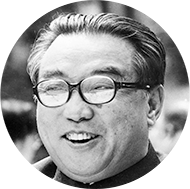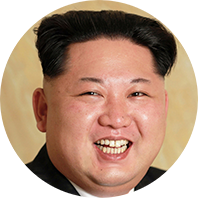
North Korean Provocations Likely Around U.S. Presidential Election
Beyond Parallel conducted a new study looking at whether there are patterns to North Korean behavior around U.S. elections. Is there truth to the narrative often found in the media and expert analysis that the North uses provocations to capture the attention of the United States? If so, do the North Koreans have something in the works for the U.S. presidential election on November 3, 2020?
Beyond Parallel cross-tabulated U.S. presidential and congressional midterm elections, with our original dataset on North Korean provocations. This dataset comparison allowed us to evaluate how close (in number of days or weeks) the North Korean provocations occurred in relation to U.S. elections.
Over the course of 32 elections since 1956, Beyond Parallel measured the “provocation window”— defined as the period of time before or after an election in which a North Korean provocation happens.
 Key Findings
Key Findings
- The provocation window has grown more narrow over time. That is, North Korean provocations have clustered increasingly closer to U.S. presidential and congressional midterm elections.
- This trend has been especially evident in the last few election cycles under Kim Jong-un. The average window for a North Korean provocation bracketed around all U.S. national elections (i.e., before or after), is 4.5 weeks.
- This correlation represents a more focused window than in previous periods. During Kim Jong-il’s regime, the window was an average of 5.5 weeks, and during Kim Il-sung’s rule, the average was 13 weeks.
- This number does not include the 2018 midterm congressional election, where there was a prolonged and anomalous period of no provocations as a result of the Trump-Kim Singapore summit.
- We expect that if North Korea rescinded its self-imposed moratorium, then a pattern similar to Kim Jong-un’s nine years of office will emerge.
- If North Korea does not resume its traditional pattern of behavior, this could suggest a desire to maintain the Singapore Summit moratorium, or it could suggest that internal matters are holding sway.
 Beyond Parallel created a dataset of U.S. election events, incorporating both presidential and congressional midterm election years, and cross-tabulated this information with our original dataset on North Korean provocations over the same period. The graph below illustrates how close (in number of days or weeks) North Korean provocations have occurred in relation to U.S. elections. This is one of the first studies to look at whether there are patterns to North Korean behavior around U.S. elections.
Beyond Parallel created a dataset of U.S. election events, incorporating both presidential and congressional midterm election years, and cross-tabulated this information with our original dataset on North Korean provocations over the same period. The graph below illustrates how close (in number of days or weeks) North Korean provocations have occurred in relation to U.S. elections. This is one of the first studies to look at whether there are patterns to North Korean behavior around U.S. elections.
On use of graph note following:
- The red triangle represents the day of the election. Points to the left and right of the red triangle represent North Korean provocations before and after an election.
- When a user hovers on a particular point they can view the amount of days before or after an election and the specific date and type of provocation.
 Other Findings
Other Findings
- There is a step change in the provocation window after Kim Il-sung’s death. In the first 40 years of the study, the provocations window hovered around 9 to 16 weeks (when looking at solely at the average of all national elections every two years). In the last 25 years, the window has narrowed to between 4.5 to 5.5 weeks.
- One anomaly is the relatively hostile period of 1965 to 1975, when North Korea greeted U.S. elections with a surprisingly short provocation window of 8.4-days, or a little more than one week.
- There are three instances in the past where North Korea had welcomed U.S. elections with a provocation on the same day—the 1978 midterm election, the 1980 presidential election, and the 1996 presidential election.
- Correlation only: Our study indicates a pattern in North Korean provocations around U.S. elections. We do not suggest that elections cause the provocations. Our findings also do not deny that there may be multiple causes for the timing of North Korean actions, including scientific/military variables as well as domestic-political ones.
North Korean Provocations and U.S. Elections since 1956

Under Kim il-Sung
Window for presidential elections = 116 days / 16.5 weeks
Window for mid-term congressional elections = 67 days / 9.5 weeks
Total average = 91 days / 13 weeks
Number of elections = 19

Under Kim Jong-il
Window for presidential elections = 30 days / 4.5 weeks
Window for mid-term congressional elections = 49 days / 7 weeks
Total average = 39 days / 5.5 weeks
Number of elections = 9

Under Kim Jong-un
Window for presidential elections = 48 days / 7 weeks
Window for mid-term congressional elections = 16 days / 2 weeks
Window for mid-term congressional elections (without 2018) = 16 days / 2.5 weeks
Total average = 73 days / 10.5 weeks
Total average (without 2018) = 32 days / 4.5 weeks
Number of elections = 4
 Additional considerations
Additional considerations
- Sample size: The sample size for the Kim Jong-un period is small (two presidential and two mid-term congressional election).
- Excluding 2018: We decided to provide a provocation window for Kim Jong-un with and without the 2018 congressional midterm election because it was significant that there was a moratorium on missile testing by North Korea during the unprecedented Trump-Kim Singapore summit in 2018.
- Provocation: We define a provocation as an intentional military action by North Korea that breaches the sovereignty of a third country such as the South Korea or the United States, causes personal injury or damage to property, and/or constitutes a serious violation of international law for the attainment of specific military, political, or diplomatic objectives. Outside of the terms of this definition, and for the purposes of this study, we do not assign a numeric metric that is determinate of the intensity of each individual provocation.
- Averages: The calculations for the average provocation window for each leader have been revised as of September 2020 to reflect updates in the database. The averages have also been rounded to facilitate the absorption of information by the reader.
